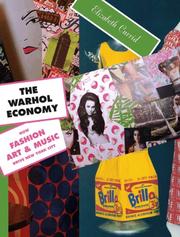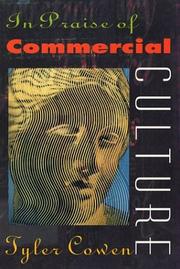| Listing 1 - 7 of 7 |
Sort by
|

ISBN: 0813024080 9780813024080 0813059399 9780813059396 0813012422 0813012430 Year: 1993 Publisher: Gainesville, FL : University Press of Florida,
Abstract | Keywords | Export | Availability | Bookmark
 Loading...
Loading...Choose an application
- Reference Manager
- EndNote
- RefWorks (Direct export to RefWorks)
Circus owners --- Recreation & Sports --- Visual Arts - General --- Social Sciences --- Visual Arts --- Art, Architecture & Applied Arts --- Biography --- Ringling, John, --- Sarasota (Fla.) --- City of Sarasota (Fla.) --- Sarasota, Fla. --- History. --- E-books --- Rüngeling, Johan

ISBN: 9780691213231 9780691138749 9780691128375 0691128375 0691138745 Year: 2020 Publisher: Princeton, N.J. Princeton University Press
Abstract | Keywords | Export | Availability | Bookmark
 Loading...
Loading...Choose an application
- Reference Manager
- EndNote
- RefWorks (Direct export to RefWorks)
Art, culture, and New York City. - How it all began : from the rise of the factory to the rise of bling. - Becoming creative. - The social life of creativity. - The economics of a dance floor. - Creating buzz, selling cool. - The rise of global tastemakers : what it all means for the policymakers
Economics --- Cultural industries --- Popular culture --- Economic aspects --- New York (N.Y.) --- Social life and customs. --- Arts (General) --- Kunst (algemeen) --- Industries culturelles --- Culture populaire --- Aspect économique --- Economic conditions. --- Conditions économiques --- Moeurs et coutumes
Book
ISBN: 0674726456 0674724569 9780674726451 0674727746 9780674724563 Year: 2014 Publisher: Cambridge, MA : Harvard University Press,
Abstract | Keywords | Export | Availability | Bookmark
 Loading...
Loading...Choose an application
- Reference Manager
- EndNote
- RefWorks (Direct export to RefWorks)
Creative work has been celebrated as the highest form of achievement since at least Aristotle. But our understanding of the dynamics and market for creative work--artistic work in particular--often relies on unexamined clichés about individual genius, industrial engineering of talent, and the fickleness of fashion. Pierre-Michel Menger approaches the subject with new rigor, drawing on sociology, economics, and philosophy to build on the central insight that, unlike the work most of us do most of the time, creative work is governed by uncertainty. Without uncertainty, neither self-realization nor creative innovation is possible. And without techniques for managing uncertainty, neither careers nor profitable ventures would surface. In the absence of clear paths to success, an oversupply of artists and artworks generates boundless differentiation and competition. How can artists, customers, entrepreneurs, and critics judge merit? Menger disputes the notion that artistic success depends solely on good connections or influential managers and patrons. Talent matters. But the disparity between superstardom and obscurity may hinge initially on minor gaps in intrinsic ability. The benefits of early promise in competition and the tendency of elite professionals to team up with one another amplify and disproportionately reward even small differences. Menger applies his temporal and causal analysis of behavior under uncertainty to the careers and oeuvres of Beethoven and Rodin. The result is a thought-provoking book that brings clarity to our understanding of a world widely seen as either irrational or so free of standards that only power and manipulation count.
Art and society -- France. --- Artists -- France -- Social conditions. --- Creation (Literary, artistic, etc.). --- Creation (Literary, artistic, etc.) --- Artists --- Art and society --- Art, Architecture & Applied Arts --- Fine Arts - General --- Social conditions --- Social conditions. --- Creative ability in art --- Creative ability in literature --- Art --- Art and sociology --- Society and art --- Sociology and art --- Social aspects --- Imagination --- Inspiration --- Literature --- Creative ability --- Originality --- Persons --- E-books --- #SBIB:316.7C330 --- #SBIB:316.7C333 --- #SBIB:316.334.2A74 --- Cultuurfunctionarissen --- Kunstenaars --- Beroepensociologie: hoger opgeleiden, professies

ISBN: 0674001885 0674445910 0674029933 9780674029934 9780674445918 9780674001886 Year: 1998 Publisher: Cambridge, MA : Harvard University Press,
Abstract | Keywords | Export | Availability | Bookmark
 Loading...
Loading...Choose an application
- Reference Manager
- EndNote
- RefWorks (Direct export to RefWorks)
This book seeks to redress the current intellectual and popular balance and to encourage a more favourable attitude towards the commercialization of culture that we associate with modernity.
Arts and society --- Arts et société --- Kunsten en maatschappij --- -Arts --- -Arts and society --- Arts and sociology --- Society and the arts --- Sociology and the arts --- Arts, Occidental --- Arts, Western --- Arts and society. --- Art, Architecture & Applied Arts --- Fine Arts - General --- Arts --- #SBIB:011.AANKOOP --- #SBIB:309H040 --- #SBIB:316.7C140 --- #A9808A --- Arts, Fine --- Fine arts --- Humanities --- Economic aspects --- Marketing --- Populaire cultuur algemeen --- Cultuursociologie: cultuur en globale samenlevingen --- Social aspects --- Marketing. --- Economic aspects. --- Economic sociology --- Sociology of culture --- E-books --- Arts, Primitive --- ART --- SOCIAL ASPECTS
Book
ISBN: 3035610517 3035610673 9783035610673 9783035611984 9783035610512 303561198X 9783035611984 Year: 2017 Publisher: Basel, Switzerland : Birkhäuser,
Abstract | Keywords | Export | Availability | Bookmark
 Loading...
Loading...Choose an application
- Reference Manager
- EndNote
- RefWorks (Direct export to RefWorks)
Die digitale Revolution ist mit dem Versprechen verknüpft, die Selbstständigkeit des einzelnen Nutzers zu stärken. Der Aufstieg von kommerziellen Plattformen zur Koordination von Crowdarbeit stellt die Gültigkeit dieses Narrativs jedoch in Frage. In Crowd-Design analysiert Florian Alexander Schmidt die Entstehungsgeschichte, Funktionsweise und Rhetorik solcher Plattformen. Der Vergleich von historischen Crowd-Diskursen und Visionen der Online-Kollaboration bildet den Ausgangspunkt für eine kritische Betrachtung aktueller Ausprägungen von Crowdarbeit: Der Fokus der Studie liegt auf der Auslagerung von Designaufgaben unter Verwendung dieser Crowdsourcing-Plattformen. Grundlegenden Mechanismen, welche den Plattformbetreibern zur Motivation und Kontrolle der Crowds dienen, werden offengelegt. The digital revolution is interwoven with the promise to empower the user. Yet, the rise of centralised, commercial platforms for crowdsourced work questions the validity of this narrative. In Crowd-Design, Florian Alexander Schmidt analyses the workings and the rhetoric of crowdsourced work platforms by comparing the way they address the masses today with historic notions of the crowd. The utopian concepts of early online collaboration are taken as a vantage point from which to view and critique current and, at times, dystopian applications of crowdsourced work. The study is focused on the crowdsourcing of design tasks, but these specific applications are used to examine the design of the more general mechanisms employed by the platform providers to motivate and control the crowds. Crowd-Design is as much about the crowdsourcing of design as it is about the design of crowdsourcing.
Virtual work teams. --- Groupware (Computer software) --- Work design. --- Human computation. --- DESIGN / General. --- DESIGN / Graphic Arts / General. --- Crowdsourcing (Distributed artificial intelligence) --- Human-based computation --- Human computation systems --- Distributed artificial intelligence --- Human-computer interaction --- Design of work systems --- Job design --- Work systems design --- Methods engineering --- Collaborative software --- Teamware (Computer software) --- Workgroup software --- Computer software --- Eteams (Virtual work teams) --- Virtual teams (Work teams) --- VTeams (Virtual work teams) --- Teams in the workplace --- Virtual work teams --- Work design --- Human computation --- E-books

ISBN: 9780691138749 0691138745 9780691128375 0691128375 0691213232 Year: 2007 Publisher: Princeton University Press
Abstract | Keywords | Export | Availability | Bookmark
 Loading...
Loading...Choose an application
- Reference Manager
- EndNote
- RefWorks (Direct export to RefWorks)
"Which is more important to New York City's economy, the gleaming corporate office--or the grungy rock club that launches the best new bands? If you said "office," think again. In The Warhol Economy, Elizabeth Currid argues that creative industries like fashion, art, and music drive the economy of New York as much as--if not more than--finance, real estate, and law. And these creative industries are fueled by the social life that whirls around the clubs, galleries, music venues, and fashion shows where creative people meet, network, exchange ideas, pass judgments, and set the trends that shape popular culture. The implications of Currid's argument are far-reaching, and not just for New York. Urban policymakers, she suggests, have not only seriously underestimated the importance of the cultural economy, but they have failed to recognize that it depends on a vibrant creative social scene. They haven't understood, in other words, the social, cultural, and economic mix that Currid calls the Warhol economy." --Cover.
Cultural industries --- Popular culture --- Industries culturelles --- Culture populaire --- Economic aspects --- Aspect économique --- New York (N.Y.) --- Economic conditions. --- Social life and customs. --- Conditions économiques --- Moeurs et coutumes --- 330.51 --- 338.78 --- US / United States of America - USA - Verenigde Staten - Etats Unis --- Culture, Popular --- Mass culture --- Pop culture --- Popular arts --- Communication --- Intellectual life --- Mass society --- Recreation --- Culture --- Creative industries --- Culture industries --- Industries --- Oude en moderne corporatistische systemen. Professionele groeperingen en organisaties --- Diensten. Non-profitsector --- #SBIB:309H040 --- #SBIB:316.7C140 --- #SBIB:316.7C310 --- Populaire cultuur algemeen --- Cultuursociologie: cultuur en globale samenlevingen --- Cultuurbeleid: algemeen --- Arts (General) --- Kunst (algemeen)

ISBN: 1281979635 9786611979638 904850354X 9789048503544 9053562192 9789053562192 9053562184 9789053562185 9781281979636 6611979638 Year: 1996 Publisher: Amsterdam : Amsterdam university press,
Abstract | Keywords | Export | Availability | Bookmark
 Loading...
Loading...Choose an application
- Reference Manager
- EndNote
- RefWorks (Direct export to RefWorks)
Challenging reappraisal of the relationship between cultural values and economics.
Arts -- Economic aspects. --- Culture -- Economic aspects. --- Arts --- Culture --- Fine Arts - General --- Art, Architecture & Applied Arts --- Economic aspects --- economic aspects. --- value --- values . --- Cultural sociology --- Sociology of culture --- Civilization --- Popular culture --- Arts, Fine --- Arts, Occidental --- Arts, Western --- Fine arts --- Humanities --- Social aspects --- E-books --- 339.325.6 --- 339.44 --- 380.1 --- 7 --- AA / International- internationaal --- Schone kunsten - Kunst als vrijetijdsbesteding. --- Beaux-arts - Arts d'agrément. --- Fine arts. Art as a way of using leisure. --- 7 Schone kunsten - Kunst als vrijetijdsbesteding. --- 7 Beaux-arts - Arts d'agrément. --- 7 Fine arts. Art as a way of using leisure. --- Culturele behoeften --- Kunstmarkt --- Waardeleer --- Schone kunsten - Kunst als vrijetijdsbesteding --- Economic aspects. --- Arts and society --- Arts, Primitive --- culture and instituten --- economics --- economie --- culture and institutions
| Listing 1 - 7 of 7 |
Sort by
|

 Search
Search Feedback
Feedback About UniCat
About UniCat  Help
Help News
News